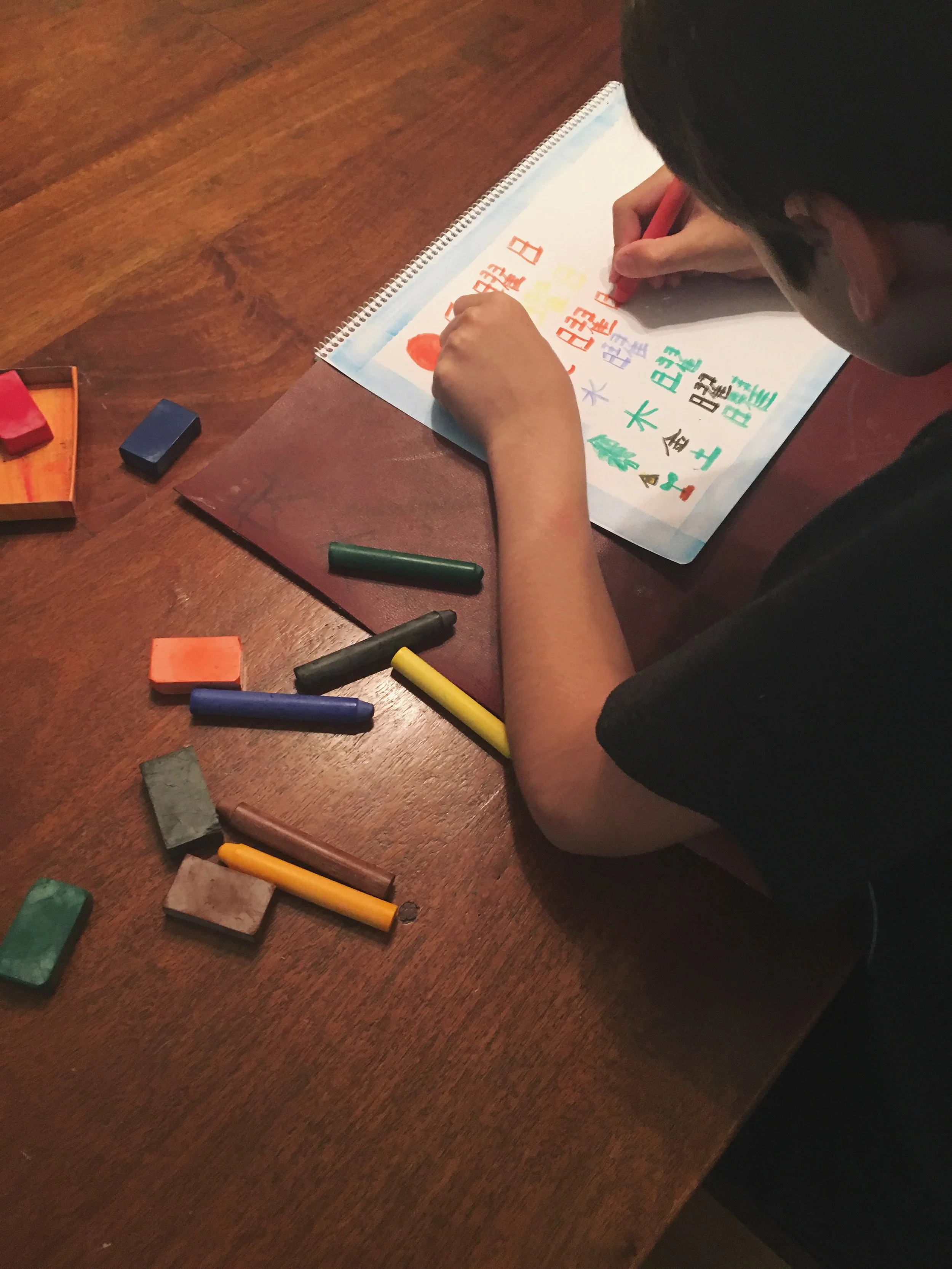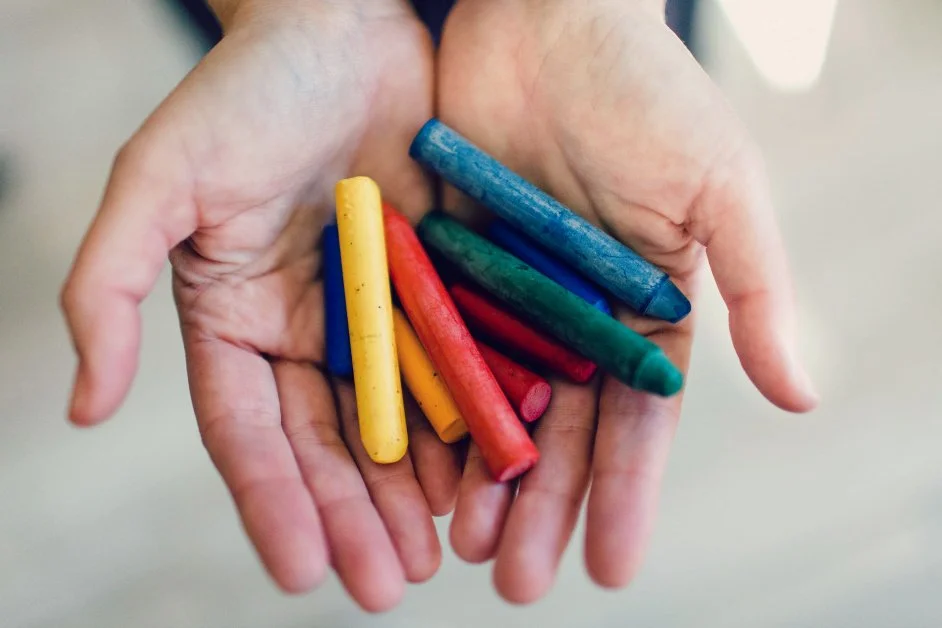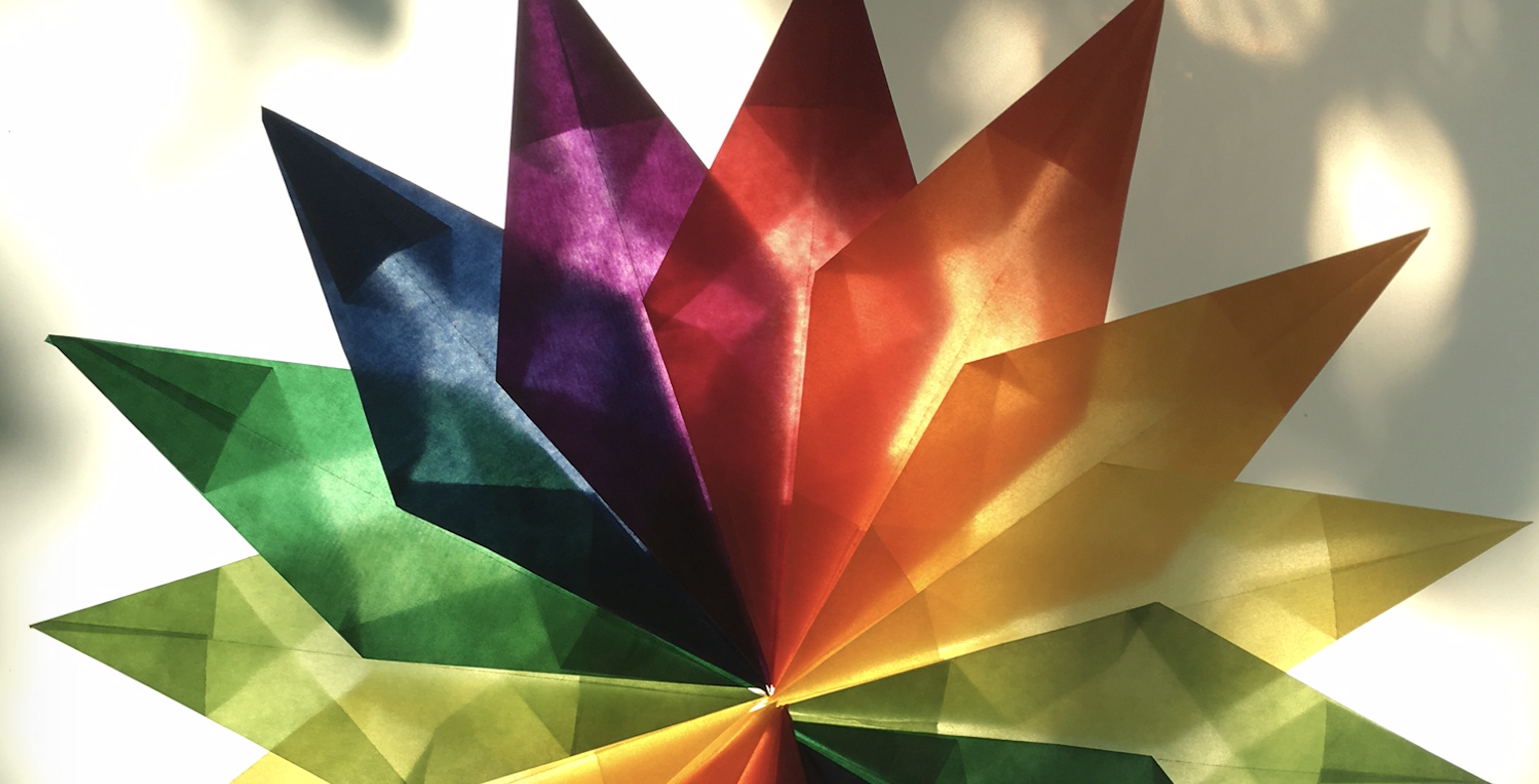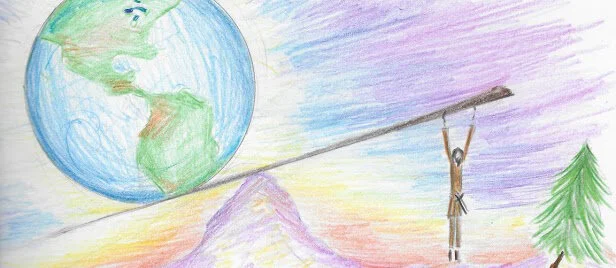
Waldorfish Blog
New course line-up!
We've finalized our course offerings for our next school year!
Individual info pages for each one will be available soon on our website. For those who, like us, get a little twitchy with all the waiting, here's what we know for certain .....
Geometry
Photo credit: Jessica Richardson
Brian is teaming up with fellow Waldorf teacher, Caitlin Amajor, for this G5-8 series! We have a FAQ page here, where you can learn more about this artistic, inspired program. Registration opens on July 15th! Courses begin on Sept. 3rd. There is also a link to a new free lesson on the FAQ page.
Grade One wet-on-wet painting
Waldorf teacher Amanda Mercer has been busy creating a beautifully supportive program for the Waldorfish community! This video series will guide parents & teachers on a journey through each primary color via wet-on-wet painting techniques & original verses. G2 and G3 courses are in the pipeline as well, although release dates for these are not set yet. The G1 course is OPEN for enrollment! Learn more about it, here!
Photo credit: Amanda Mercer
For the 2018/2019 school year we are pulling together our favorite lessons from the first two sessions of this program! This collection will be perfect for families who have not participated in WA previously. As in prior sessions, the lessons will post x1 per week, and Brian & I will be actively involved in the classroom. Registration will open July 15th, the course will begin August 10th. (see updated info, here!)
Festival Art
We're teaming up with storyteller Sara Logan for this new course! 10 original/adapted stories paired with art lessons to carry your family through the full circle of a festival year!! This course is ideal for families who have previously participated in the Weekly Art program, or those looking for less frequent art lessons than offered in our other programs. NOTE: this program will initially only be available to WA students currently enrolled in the '17-18 session. It will become available to the whole community in time for the '18 Advent season!
As always, send us your thoughts + questions by emailing us at support@waldorfish.com
All our best to you from the garden,
~Robyn (& Brian nearby) Wolfe
More Than Meets The Eye: The Role of Art in Waldorf Education.
Photo: Cristina Havel
The liberal use of color that infuses all aspects of a Waldorf Education is not only delightful, it’s deliberate.
Beautiful main lesson book entries created by students, beginning in first grade with the heartwarming “One Sun”, increase in complexity throughout the grades. Color, form, technique, and meaning converge to animate all subject matter from math to science, foreign language and native language studies (and for more on art in the classroom, click here!). What is the value of this approach?
“The important thing is to arouse in children a real feeling for life, and color and form have the power to lead right into life...these details are essential to the vitality of the work.” -- Rudolf Steiner, 1922, The Spiritual Ground of Higher Education
Shaping and Perceiving
Artistic endeavors sharpen two very important human skills: the ability to shape, or see, and the ability to perceive, or distinguish. When practiced over time using diverse techniques across a variety of subjects, something very special emerges: the ability to shape and perceive new ways of looking at the world. In 1st grade, “One Sun” might become “one son” -- or “one bun”, as my son said to me, giggling, as I ate a hamburger when he was six. As the Waldorf student develops, connections continue to be made on ever deepening levels and the creative process is strengthened, resulting in students who are able to make connections across a variety of subjects. This skill is highly valued in our culture and is known as interdisciplinary thinking. It’s a truly holistic way of looking at the world and contributing effectively.
I am always doing things I can't do, that's how I get to do them. -- Pablo Picasso
Photo: Robyn Wolfe
The idea that a child cannot succeed in Waldorf Education unless he or she has excellent artistic skills is a myth to be dispelled. One child may draw endlessly in the early grades while another may be adept at origami or painting, or lose herself in handwork. Skills and interests “come in” at different times and under different circumstances. The creative process is sometimes mysterious and always transformative, no matter when and how it reveals itself. There is no wrong way to express oneself artistically. We must teach our children to create without judgement, only then will they be free from inner constraints and available to capture a world in perpetual motion. Therein lies the magic and power of art.
What is Waldorfish Weekly Art?
Waldorfish Weekly Art Foundations is a unique series of online art classes aimed at teaching a variety of methods widely practiced in Waldorf schools around the world. These classes can be used as weekly art classes that are folded into existing homeschool routines of any kind, as refresher courses for brick-and-mortar Waldorf school teachers, and, for those with far-reaching goals with respect to Waldorf homeschooling, as foundation courses that can be applied to different subjects as your student progresses through the grades.
Photo: Cristina Havel
"I’m so pleased to have found art lessons that draw on the Waldorf style as opposed to all of the “outline and color in” art lessons that seem to be popular online. We are really enjoying them!” ~ Heidi
"As a teacher - drawing figures for my chalkboard drawings has always been difficult, and I was rarely happy with the results. Learning how to first draw the gestures and then detailing it. Soooo much easier and successful! I will play more with this one!" ~ Debra
Learning art as a metaphor for living well.
Miranda Altice at The Indigo Teacher has been working her way through our Waldorf art training program, Waldorf Art for Beginners over the past few weeks.
She has written about her process of shedding & peeling away the layers of anxiety and fear that so many of us carry when it comes to Art. We're sharing some of her revelations here, and you will find a link to her full piece below.
Taking the Waldorf Art for Beginner’s course from Waldorfish was honestly a summer treat for myself and would, in turn, help me in my quest to teach tiny humans how to enjoy expressing themselves through art.
But it taught me more than that. Robyn and Brian’s super simple, self-paced classes reminded me how to feel confident in my artwork… and in my life… both of which could turn out any which way the blank paper and unpredictable watercolors decide.
A few things I learned… in metaphors:
Slow down. No really… SLOW DOWN. (There is no reason to rush through each part of the process. I even slowed down getting the paintbrushes to the table. And it felt good. I felt more in the moment, and my pace rubbed off on the kids.)
Shut everything else out and OBSERVE.(Watch how the watercolors blend together and are in no rush to become something unique. Observe how the chalk clings to the fibers as it glides over the cardstock. Stop multi-tasking for just a moment and just be there.)
Be PATIENT. (The colors will absorb, they will transform, and it’s not worth raising my blood pressure when it is not meant to turn out a certain way.)
TRUST the Process. (It’s just as much about the process as it is the end result, which may turn out better than expected. Even if it doesn’t, trusting the process and keeping my cool was so worth it.)
Don’t beat myself up, and don’t be afraid. (See 3 &4. One of my favorite things Brian said in his mellow tone during one of the videos was, “Don’t be afraid… it’s not supposed to look like anything in particular.” I noticed myself going with the flow, trusting the process, and accepting the outcome… and also daring to swivel my brush a little more.)
FRAME it. (I’m allowed to admire my work and accept compliments without following up with negative, picky comments.)
Let GO. (Allow yourSelf the opportunity to be immersed in water to better prepare for absorption of watercolors – now contemplate that metaphor.)
Take what was learned off of the workspace and into the world. (I often advise this to my yoga students, “Take your practice off your mat.” The spiritual and emotional lessons learned are meant to enrich my life as a whole, not just while I’m sitting at my workspace.)
As with yoga, I found my experience with diving into the Waldorfish classes to be a meditation in movement… one that I will continue to practice....
Read the full piece here.
Photo: Miranda Altice
Weekly Art round-up...
The families participating in our Weekly Art program continue to inspire us with their work!
"I so enjoyed this lesson! As a teacher - drawing figures for my chalkboard drawings has always been difficult, and I was rarely happy with the results. Learning how to first draw the gestures and then detailing it. Soooo much easier and successful! I will play more with this one!"
~Debra M.
@anthroposofeelings
@brianwolfe
@cdawley
@karenlmw528
@sloanbrie
@claudinemelnik
@druthyb
@mainsdelaine
I was re-reading an interview Brian did with The BEarth Institute a couple of years ago...my favorite part is his response to this question:
"What makes a (teacher's) drawing 'good enough' for the classroom?"
His reply:
"I think there are two important qualities that make a drawing successful:
1. The image is living inside the teacher and the students, meaning the class has heard stories, looked at pictures, studied the subject, etc. and,
2. The students see the teacher or parent striving to become better as he/she draws & teaches.
I think a love of creating beautiful images for the children and a willingness to strive for improvement is the best anyone can do."
"I want to thank you for the thoughtfulness you put into the order of presenting projects. I very much enjoy the breathing-in - breathing-out quality that comes with different projects."
~ Kay S.
Looking for something?
Welcome to Waldorfish! We started this adventure in 2012 out of a desire to make Waldorf training more accessible to class teachers in remote locations and to homeschooling families everywhere! Read more, click here.
WE WON! Our Weekly Art courses were voted “best interactive art program.” Learn more about the award, here.
A few of our most popular blog posts:






























